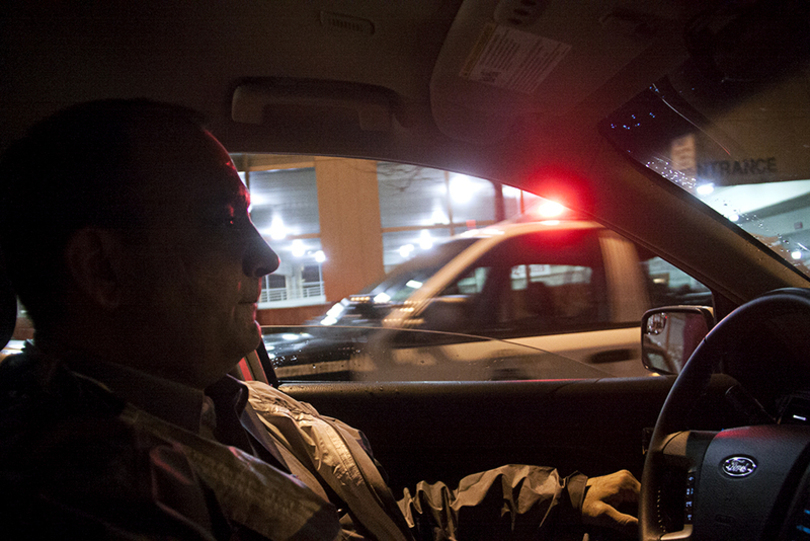Syracuse Police Department body cam purchase will improve public and officer safety

Body-worn cameras hold police officers accountable and improve public safety. Daily Orange File Photo
The ethics of policing in America has been controversial since law enforcement’s inception. In the last decade there have been innumerable, high-profile cases of police brutality, almost exclusively against people of color. The seeming omnipresence of these stories has incited ongoing national discussions about how to best prevent excessive use of force by police officers. One proposed solution to these issues was body-worn cameras.
Syracuse Mayor Ben Walsh and Police Chief Kenton Buckner announced on August 29 that the Syracuse Police Department will be adding 110 body-worn cameras to their inventory. This addition will more than double the number of cameras the department possesses. The department began a pilot program about a year ago, at which time they were given 100 cameras, and have been utilizing them since.
This is a move in the right direction. Body-worn cameras hold police officers accountable and improve public safety.
Body-worn cameras are relatively new technology, but current evidence suggests their efficacy is significant. Body-worn cameras have increased citizens’ trust of police officers, and have led to decreases in the use of excessive force and complaints of police misconduct. Officers who wear body cameras have also benefited from easy-to-access objective and definitive evidence in a wide variety of cases.

Karleigh Merritt-Henry | Digital Design Editor
“I think overall it’s a net good because it protects people,” said Todd Berger, an associate law professor at SU’s College of Law who specializes in criminal law and procedure. “It protects citizens in their interactions with police, but it also protects police officers in terms of helping to corroborate their version of events.”
The surge in popularity of body-worn cameras has run parallel to the rise of social movements with a focus on police brutality. The technology was first implemented on a large scale in the United States in 2014, the same year as the murder of 18-year-old Michael Brown in Ferguson, MO.
Criminal justice reform has been one of the decade’s preeminent issues, and rightfully so. The abundance of cases of police misconduct indicate the need for structural change in policing, but a need for institutional change can run counter to individual desires.
First Deputy Police Chief Joseph Cecile said that the cameras were initially met with trepidation, but that officers warmed up to them during the department’s pilot program.
“Over the course of this pilot program, we are now having more officers that actually don’t have them are now asking for them,” Cecile said. “The apprehension has gone away and turned into a desire to actually have a body camera.”
Current data shows an overwhelming civilian support for equipping police officers with body-worn cameras. Research from the CATO Institute, a public policy research organization, shows 92% of people support for the cameras among Americans. In an unusual moment of consensus, the American people overwhelmingly agree that utilizing this technology represents progress. For the Syracuse community specifically, this could not be truer.
Cecile said while the department’s decision to utilize body cameras wasn’t driven by race, it’s important to note the impact police transparency can have on communities of color.
Over-policing in communities of color, primarily Black and Hispanic neighborhoods, is common across the nation, and body cameras have been a beneficial tool in mitigating potential abuses of power. In a racially diverse city like Syracuse, these steps can be wildly beneficial.
“When we went out to the community to show them the body cam and the limitations and also the pros, we went out to meetings all around the city so we engaged the public no matter what neighborhood they were in,” Cecile said. “We wanted everyone in the city to feel comfortable.”
The ability to check power is a fundamental American virtue. While the police play an important role in communities, the ability to ensure their ethical conduct is a necessity. It’s imperative that police officers and departments exercise cultural sensitivity in the communities they serve, not merely by doing good, but by ensuring there are repercussions when they don’t.
The expansion of the body-worn camera program in Syracuse is a display of such sensitivity, as well as solidarity with a community that has faced challenges with its police department before.
If the police want to fulfill their mission to protect and serve, they must first take the necessary steps to ensure they are not the very people communities need protection from. These cameras are a crucial step law enforcement must take to protect themselves, to protect the communities they serve and most importantly, to begin the work of righting centuries of wrongs.
Sydney Gold is a freshman policy studies and public relations major. Her column appears bi-weekly. She can be reached at segold@syr.edu. She can be followed on Twitter @Sydney_Eden.




